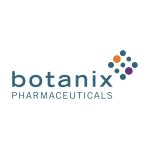PHILADELPHIA & SYDNEY–(BUSINESS WIRE)–$BOT #AMR–Clinical stage synthetic cannabinoid company Botanix Pharmaceuticals Limited has today published positive data from a world first human clinical study, examining the safety, tolerability and efficacy of its BTX 1801 antimicrobial product for the eradication of Staphylococcus Aureus (Staph).
Staph, also called golden staph, is a common bacterium that lives on the skin or in the nose. In most situations it is harmless; however, if it enters the body through a cut in the skin, it can cause a range of mild to severe infections, or even death. As part of this study, Botanix was working to minimise the risk of infection by removing or decolonising bacteria from the nose � a primary site for spreading infection to other parts of the body (the nose is frequently touched, usually more than 40 times a day).
The BTX 1801 Phase 2a nasal decolonisation proof of concept study showed that two different BTX 1801 synthetic CBD formulations (ointment and gel) were safe, well tolerated and successful at eradicating Staph bacteria from the nose of healthy volunteers nasally colonised1 with Staph.
Eradication rates as high as 76.2% were obtained at Day 7 post treatment, with eradication effects extending through to Day 28 of the study to 23.8%, despite no further treatment after Day 5. Botanix met the endpoints of its BTX 1801 Phase 2a study.
�We are very pleased to announce this top-line data that demonstrates synthetic cannabidiol (�CBD�) is a safe and effective nasal decolonisation agent. Moreover, this is the first time that synthetic CBD has been shown to have clinical utility as an antimicrobial agent in humans,� said Botanix President and Executive Chairman, Vince Ippolito.
�These results support continued development of BTX 1801 for the treatment of a variety of infections, in addition to the prevention of post-surgical infections.�
Antibiotic resistance is a significant global challenge in the context of public health, with the UN forecasting drug resistant diseases could cause 10 million deaths each year by 2050 and result in an annual economic loss of US$100 trillion if new solutions are not found.2
Staph and methicillin-resistant Staph (MRSA) are the leading cause of Surgical Site Infections3 (SSIs) and approximately 80% of SSIs are caused by the patient infecting themselves from their own nose. Antibiotics used for nasal decolonisation (e.g. BactrobanTM also known as mupirocin) have seen a significant increase in the development of resistance, with some hospitals recording resistance rates as high as 95% restricting its use.2
�BTX 1801�s observed upfront eradication rates and sustained eradication effect, following the treatment period, is very encouraging. Data from the BTX 1801 study represents a significant milestone and enhances the potential of better infection prevention measures in surgical settings to combat the growing global development of antibiotic resistance,� said Murdoch University�s Chair of Public Health, Professor Geoffrey Coombs.
Botanix is now actively exploring opportunities for its synthetic cannabidiol and broader cannabinoid analog assets in other secondary infections, and across different of routes of administration.
Summary of 1801 Study design and endpoints
The 1801 Study was a randomised, vehicle-controlled, double-blind, Phase 2a study conducted at a single site due to constraints associated with COVID-19. The primary objectives focused on evaluating safety and tolerability, as well as evaluating the effectiveness of two different candidate formulations of BTX 1801 (ointment or gel containing synthetic cannabidiol), compared to their respective vehicle or placebo formulations (the ointment or gel without synthetic cannabidiol). Each formulation was applied twice daily for 5 consecutive days to the anterior nares (the inner surface of the nose) of healthy participants intranasally colonised with Staph. Male and female healthy volunteers aged 18-65 were eligible to enrol in the 1801 Study.
Safety and tolerability were evaluated at prespecified timepoints during treatment (Days 1 to 5) and following treatment at Day 7 (2 days after the end of treatment), Day 12 (7 days following the end of treatment) and at Day 28 (23 days after the end of treatment). Efficacy was evaluated at Day 7, Day 12 and Day 28. No prospective calculations of statistical power were made for this exploratory study.
Summary of 1801 Study results
Results of the BTX 1801 Study show the two formulations of BTX 1801 met the Study endpoints. Firstly, BTX 1801 was safe and well tolerated, with all 66 enrolled participants successfully completing the 1801 Study with each group (ointment, gel and vehicle) consisting of 22 participants. The incidence of adverse events was low, mild in severity and occurred at similar rates across the different treatment groups with no severe events reported. Secondly, efficacy of both ointment and gel formulations at the primary endpoint of Day 12 was demonstrated.
At Day 7, one of the secondary endpoints (2 days after the end of the treatment period), Staph eradication was demonstrated in 76.2% and 68.8% of the participants in the BTX 1801 ointment and gel groups respectively, compared with 27.8% of participants in the combined vehicle groups. At Day 12 (7 days after the end of the treatment period), the primary endpoint, BTX 1801 demonstrated Staph eradication in 38.1% of participants in the ointment group and 25.0% in the gel group, compared to 16.7% for the combined vehicle groups.
Despite no treatment since Day 5 of the study, by Day 28, the other secondary endpoint, (23 days after the end of the treatment period), Staph eradication rates of both formulations of BTX 1801 only declined slightly from Day 12, to 23.8% and 18.8% for the BTX 1801 ointment and gel groups respectively, compared with 12.5% for participants in the combined vehicle groups.
_______________________
1 Nasal colonisation or carriage of S. aureus was confirmed on 3 separate occasions over a period of up to 43 days prior to the subject receiving treatment.
2 No Time to Wait: Securing the future from drug-resistant infections. Report to the Secretary-General of the United Nations (2019) available at https://www.who.int/antimicrobial-resistance/interagency-coordination-group/IACG_final_report_EN.pdf?ua=1
3 Decolonization to Reduce Post discharge Infection Risk among MRSA Carriers, Huan et al Feb 14 2019, N Engl J Med 2019; 380:638-650
Contacts
Media enquiries
Haley Chartres
H^CK Director
P: +61 423 139 163
[email protected]








